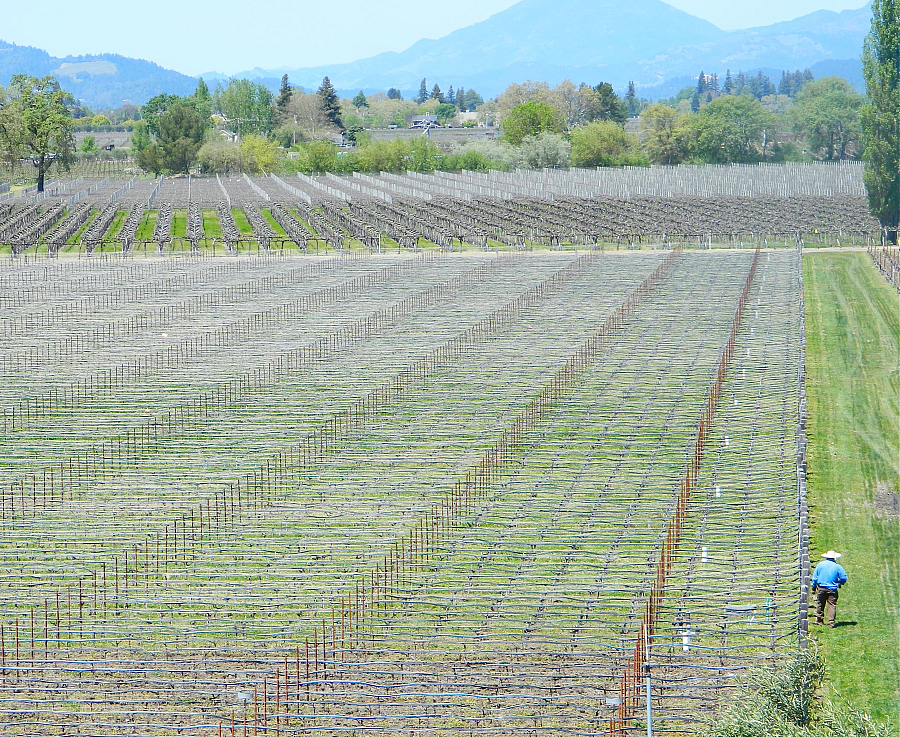Napa Valley’s underbelly: The personal cost of living locally

A worker in a Napa Valley vineyard.
(Photo by Alaina McDavid via Flickr)
The story of the Napa Valley is about more than its transition from a sleepy, rural commuter town to the wine capital of America, drawing millions of tourists per year.
That expansion is thanks, in large part, to low-paid workers, most of whom have been priced out of the county. Those who stay are forced to sacrifice. And for those who seek to live in the city of Napa, the county seat, they face the challenging task of securing housing in a city with a 99 percent tenant occupancy rate, and in a county where development is limited by a 30,000-acre agricultural preserve.
While the Napa Valley was ranked the 16th wealthiest metropolitan area in America, there are still stories of families sharing two- or three-bedroom apartments, with parents working more than one job. There are rumors of a garage-turned-apartment that was shut down by government officials, but was once filled with nearly a dozen vineyard workers, new to America and saving to send money home to their families.
A 25-year-old friend spoke of the flea-ridden, 400-square-foot unit that she once rented for $1,200 per month. The woman, who is a bartender in St. Helena, wanted to tell her story to raise awareness about local housing issues, but has asked that we do not share her name because she does not want people to know about this time in her life.
The unit did not have windows or vents, and was illegally converted from a business to an apartment. Her landlord installed a shower, but the water pressure was so poor that she and her roommate, who were both around five feet tall, bought a step ladder to get closer to the showerhead. She recalled falling from the ladder many times, losing consciousness and being woken up by her roommate.
The downtown Napa unit was all she could afford while paying her way through the nearby community college, but she ultimately left the place because her whole body was covered in fleas.
Others are still struggling to pay bills after losing work for two or three weeks in the fall of 2017, when devastating wildfires struck the county. Some renters live in conditions that have continued to deteriorate since an earthquake that struck the county in 2014. Both of these natural disasters have further narrowed housing stock, further contributing to overcrowding.
All of these stressors are detrimental to the health and wellbeing of low-income residents. For those in overcrowded or illegally converted units, infestations and fast-spreading illnesses are a concern, and research indicates overcrowded housing can alter mental health and mood. For those who live in earthquake-damaged units, mold may be a concern. Renters may not know their rights or have written lease agreements, and could be afraid to complain for fear they lose housing.
For others, these worries pile up and cause mental health to decline. This is especially true for immigrants, who worry about recent efforts to reform immigration and crack down on people who illegally cross the border. More than 900 clients of the county’s second-largest health care provider withdrew from state benefits after the Trump administration floated a proposal to make changes to a rule that helps the government decide whether a person trying to enter America or obtain a green card may primarily rely on public dollars. By the time health care providers do see clients, they’re often very ill and in desperate need of help.
Health care providers say it doesn’t help that it can be hard to attract qualified, bilingual mental health professionals willing to pay a premium to live in the county. A local health-care provider that primarily sees low-income patients only served a quarter of patients who sought help last year.
How we plan to report the story
This project will be a partnership between The Napa Valley Register and KVON. In the pages of the Register, we hope to share the stories of people who face these issues, and spotlight and evaluate potential solutions to these problems. The Register is an English-language outlet, but we plan to translate our articles into Spanish because about a third of county residents speak the language at home. On KVON and bilingual talkshow La Hora, we hope to periodically discuss our reporting, invite our sources on air, seek feedback from the community and connect residents with resources.
We hope to distribute recording devices and cameras to sources who would be willing to document their living conditions or the stressors they encounter in their daily lives, and set up recording stations in trusted or highly frequented places for the same purpose. We also hope to host at least one public meeting to solicit feedback and discuss reporting, and set up a voicemail and text line for tipsters and sources.
Because housing is heavily impacted, many of these individuals are hesitant to share their stories out of fear that they will lose the only place they have to call home, no matter how tight, overcrowded, and small it may be. We hope that by providing these materials, affected individuals will feel more open to sharing their stories in the comfort of their own space.


